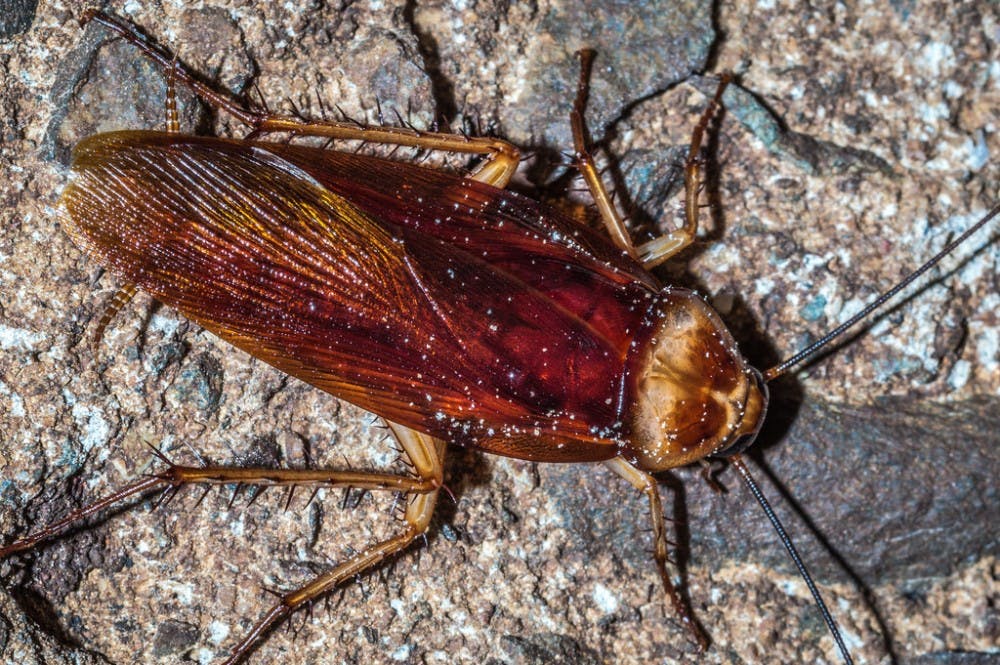With this current period of rapid technological advances, it is no surprise that scientists and engineers all over the world are investing ample time and effort into improvements in robotic technology. Many believe that advances in this field will revolutionize the way people live in the next few decades.
While research in robotics is not uncommon, two researchers at Hopkins’ Whiting School of Engineering have taken a unique approach to their new design.
Recently, postdoctoral fellow Sean Gart and mechanical engineering Assistant Professor Chen Li have drawn inspiration for the locomotion of their robotics from the movement of cockroaches.
While the idea might sound surprising at first, there are many logical reasons that explain why the movement of these roaches would be ideal for modern day robotics.
In the wild, many small reptiles, insects and mammals, including cockroaches, encounter uneven terrain and small obstacles in their path on a daily basis, and they must be able to skillfully maneuver around them in order to survive.
Similarly, in a robotics mission, the ability to skillfully maneuver through challenging terrain would be key in the success or failure of a mission.
Furthermore, humans oftentimes underestimate cockroaches’ durability and resiliency to extreme envrionments.
Roaches have thrived in terrains that typical other creatures would not dare cross; after all, cockroaches have been around for over 300 million years.
The unique body structure of the cockroach shows that they were made for running.
In fact, after taking into account the drastic differences in body size, research has demonstrated that a human would need to run nearly 200 miles per hour in order to keep up at a rate that is proportional to a cockroach’s speed.
Li and Gart observed cockroaches running along terrain with two types of obstacles: big bumps and gaps that mimic what a cockroach may see in their wild Central American habitat.
High speed cameras were used to precisely track the roaches’ movements. The researchers played the camera footage back in slow motion afterwards to observe the physics of movement in these creatures that can hopefully be used in robotic devices.
The researchers have already been putting the things they witnessed from the bugs into action. Recently, Li and his team built a multi-legged robot that mimics the running style of a cockroach. This robot has a cockroach inspired tail that has greatly increased the gap and bump size that the robot can traverse.
While the team has had success in improving robotic locomotion, researchers still hope to continue expanding their findings. The ongoing goal is to investigate movement across more complex terrains, such as rubble and fallen buildings.
As the quest to improve current robotic technology continues, researchers and college students look forward to how new innovations will change everyday life.
In an interview with The News-Letter, freshman biomedical engineering and computer science double major as well as robotics club member Stephen Kyranakis expressed his excitement for the future of robotics.
“Robotics is the future because it offers solutions to an incredibly wide range of problems. From increasing manufacturing efficiency, to rescuing people in dangerous situations, to exploring where humans can’t, robots have many opportunities to revolutionize the world,” Kyranakis said.
However, while Kyranakis believes that robotics should definitely be further pursued, he believes that we should do so with caution.
“Of course, robots powerful enough to change the world for the better also have the ability to cause great harm if used improperly, so it is critical that we research not just how to make robots, but rather how to make them safely,” he said. “The abilities of advanced robots seem nearly boundless, and robotics will surely prove itself to be one of the greatest tools humanity has to improve its condition.”





